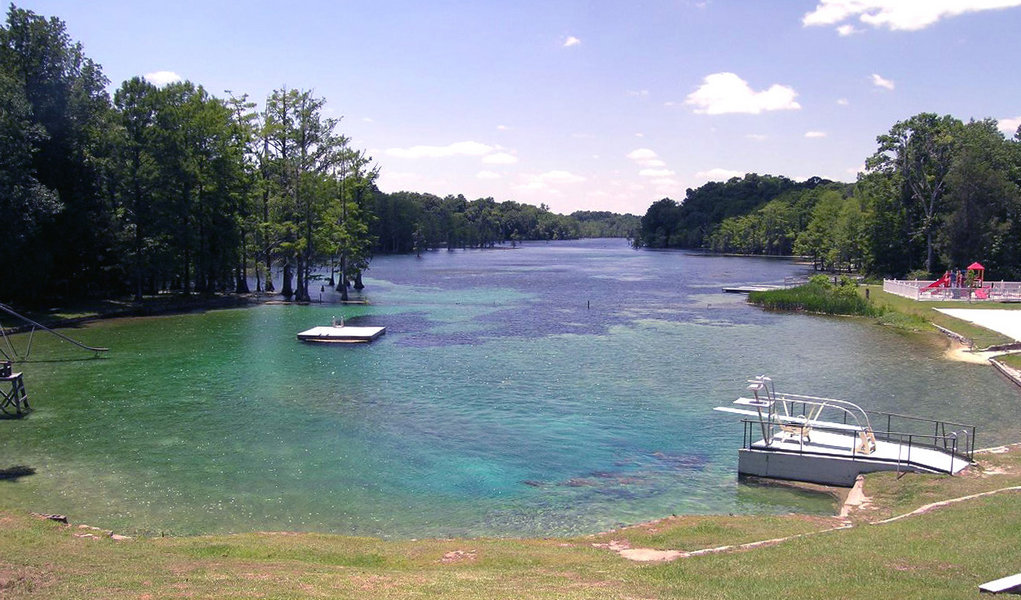Chapter 403, F.S.
This chapter provides the primary statutory authority for DEP and its environmental control activities. Authorization is provided for implementation of the state’s wastewater management program, for implementation of the state’s drinking water program and for other DEP programs.
This statute authorizes the issuance of permits for domestic wastewater facilities. Timeframes for permit application review and issuance or denial of permits are established. This statute mandates that DEP issue permits if the applicant demonstrates that the proposed facilities will meet applicable statutory and rule requirements and will not violate water quality criteria.
Section 403.064, F.S.
Contains the key statutory language dealing specifically with reuse. This section accomplishes the following.
- Establishes the promotion and encouragement of reuse and water conservation as formal state objectives.
- States that reuse is considered to be "in the public interest."
- Concludes that reuse systems designed and operated according to DEP rules shall be considered environmentally acceptable and not a threat to public health and safety.
- Requires all applicants for permits to construct or operate a domestic wastewater treatment facility shall prepare a reuse feasibility study as part of their application for the permit.
- Encourages local governments to implement reuse projects.
- Allows local governments to allocate costs of reuse systems in a reasonable manner.
- Mandates that the Public Service Commission (PSC) allow utilities implementing reuse to recover the full cost of reuse facilities.
- Requires that consumptive use permits be consistent with local reuse programs.
- Mandates that DEP ensure that permits under review are consistent with the reuse requirements of the appropriate water management district consumptive use permit given that the facility is located within, serves, or discharges to a water resource caution area, and the utility has responsibility for water supply and domestic wastewater.
- Mandates that local governments implementing reuse systems require developers to comply with the reuse program.
- Places limitations on deep well injection and other forms of effluent disposal.
- Provides statutory authority for inside uses of reclaimed water.
Section 403.135, F.S.
This section addresses civil liability issues for persons who use reclaimed water. A person practicing spray irrigation using reclaimed water is not liable for civil damages resulting from the irrigation. Acts of negligence and misconduct are not included in the limitation on liability. The owner and operators of wastewater treatment facilities providing reclaimed water for reuse are not excused from civil liability as long as the irrigation system complied with the appropriate rules and permits.
Chapter 120, F.S.
This chapter establishes rulemaking procedures for state agencies. Provisions for administrative challenges are also established.
Chapter 373, F.S.
This chapter establishes the five water management districts. The focus is on regulation of water quantity. It provides several authorizations to DEP and the water management districts, including the authority for the water management districts to issue consumptive use permits for water use.
Section 373.250, F.S.
This section establishes the promotion of reuse of reclaimed water and water conservation as state objectives. It authorizes DEP and water management districts to adopt rules to permit use of water from other sources in emergency situations when reclaimed water becomes unavailable. It also precludes the water management districts from adopting rules that would give preference to users who do not use reclaimed water over users who use reclaimed water.
Chapter 367, F.S.
This chapter provides authorization for the PSC and its activities. The PSC has the responsibility for regulation of rates charged by investor-owned utilities located in specific counties in Florida. The PSC also has the ability to designate service areas to be served by an investor-owned utility.
Indian River Lagoon System and Basin Act of 1990
This act, which is contained in Chapter 90-262, Laws of Florida, was created to help protect the Indian River Lagoon System from discharges from package wastewater treatment plants and the improper use of septic tanks. The act established three objectives for domestic wastewater facilities in this area:
- Elimination of surface water discharges,
- Investigation of feasibility of reuse, and
- Centralization of wastewater collection and treatment facilities.
Section 2 of the Act
Prohibits new discharges or increased loadings from domestic wastewater treatment facilities into surface waters and requires that surface water discharges from domestic wastewater facilities be eliminated before July 1, 1995, with the following exceptions:
- The permit applicant conclusively demonstrates that no other practical alternative exists and that the discharge will be treated to advanced treatment levels or higher;
- The applicant conclusively demonstrates that the discharge will not cause or contribute to water quality violations and will not hinder efforts to restore water quality in the Indian River Lagoon System; or
- The discharge is an intermittent surface water discharge occurring during wet weather conditions, subject to the requirements of applicable DEP rules.
Section 3 of the Act
Requires each owner of an existing wastewater treatment facility within the Indian River Lagoon Basin to investigate the feasibility of using reclaimed water in order to promote reuse and reduce nutrient loadings from domestic wastewater treatment plant discharges. These reuse feasibility studies were to be completed before July 1, 1992.
In 1997, almost 39 million gallons per day of reclaimed water was reused in the counties of the Indian River Lagoon System. This profusion of reuse activity was due, in part, to the Indian River Lagoon System and Basin Act.
The restoration of the Indian River Lagoon System is supported by the SJRWMD, SFWMD, DEP, U.S. Fish and Wildlife Services, South Florida Coastal Ecosystem Program, Florida Inland Navigation District and the National Estuary Program.
All statutes referenced on this page can be found on Online Sunshine, the official Florida Legislature webpage.


